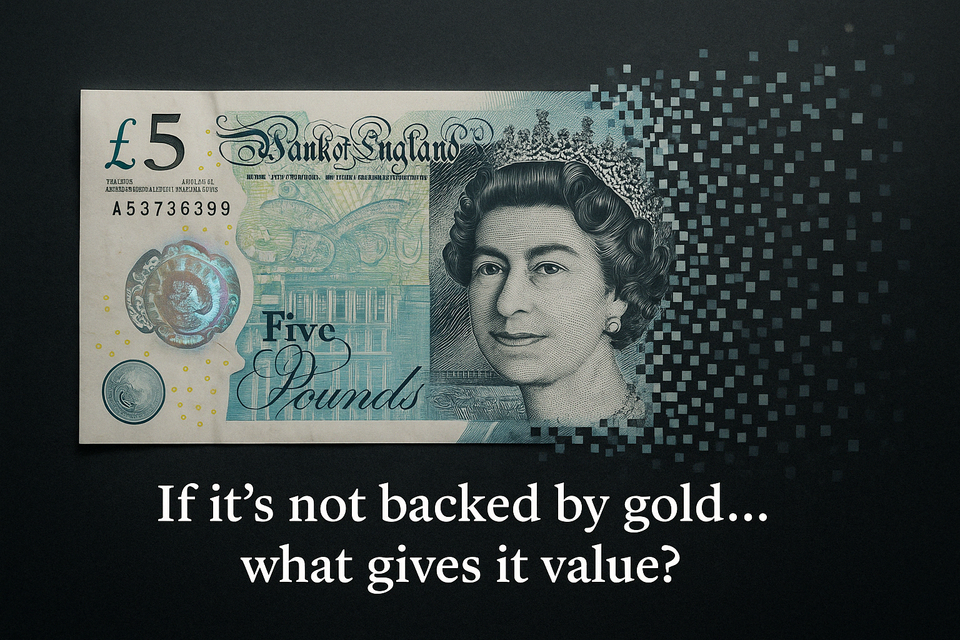Here's Why Crypto is Inevitable

For decades, the global financial system has rested on a carefully maintained illusion: that fiat money, created by governments and controlled by banks, has intrinsic value. In truth, it doesn’t. Once decoupled from gold, money became a digital fiction, sustained only by trust, tax enforcement, and tradition. It's not backed by gold, silver, or even logic—just a promise, and a computer keyboard.
But promises wear thin. And trust, once stretched by inflation, banking crises, and rising debt, eventually snaps.
Enter cryptocurrencies. Born out of financial distrust and digital innovation, crypto is not a copy of fiat—it’s a countermodel. It’s programmable, decentralised, transparent, and increasingly trusted. And it is no longer just the domain of tech evangelists or libertarian dreamers. Governments, hedge funds, pension institutions, and even central banks are starting to engage with this new monetary system, not just out of curiosity, but necessity.
Here's why the shift is not only likely, but inevitable:
1. Fiat is already digital, but not decentralised
Banks don’t print money. They create it by typing figures into a screen. This digital nature is nothing new. What crypto does is strip out the centralised control, the opacity, and the dependence on institutions that have repeatedly failed to serve the public interest.
2. Trust in traditional systems is eroding
From Northern Rock to Lehman Brothers, from the 2008 crash to modern inflationary policy, trust in banks and governments as safe custodians of wealth is dwindling. People are waking up to the fact that their savings are being silently taxed by inflation and manipulated by monetary policy they can’t control.
3. Crypto offers transparency and scarcity
Unlike fiat, which can be printed in limitless quantities, many cryptocurrencies are governed by code-enforced limits. Bitcoin, for example, has a fixed supply of 21 million coins. Every transaction is recorded on a public ledger.
There are no hidden hands, no overnight decisions behind closed doors.
4. Institutional adoption is already underway
Major investment firms like BlackRock, Fidelity, and Goldman Sachs now offer crypto exposure. El Salvador recognises Bitcoin as legal tender. The European Central Bank and the Bank of England are both developing their own central bank digital currencies (CBDCS). When the institutions that once dismissed crypto start investing, building, and regulating it, you know the tide has turned.
5. Younger generations are skipping the bank model entirely
For Millennials and Gen Z, who’ve grown up in a world of smart tech and digital payments, the idea of queuing in a bank branch is already obsolete. They’re not just comfortable with digital assets—they expect them. Crypto wallets are replacing savings accounts. NFT's, staking, and DeFi protocols are becoming part of a new financial literacy.
6. Programmable money enables new forms of value exchange
Cryptocurrencies aren’t just digital cash—they’re platforms. They can power smart contracts, decentralised finance, asset tokenisation, and borderless commerce. In a world moving towards the metaverse, digital ID, and global citizenship, programmable money will be the engine behind it.
7. Central banks are losing their monopoly
In the past, only governments could create money. That monopoly is slipping. Decentralised cryptocurrencies offer a parallel system—not one controlled by political will, but governed by consensus, code, and community.
The shift won’t be overnight. It will be messy, regulated, co-opted in places and resisted in others. But make no mistake: just as Netflix disrupted the video store, and email replaced the fax machine, crypto is now doing to banking what the internet did to media.
It’s not just an investment — it’s an evolution. And once you see money as code, not coin, the future becomes impossible to ignore.
If this article piques your interest in crypto, check out the following:
Member discussion